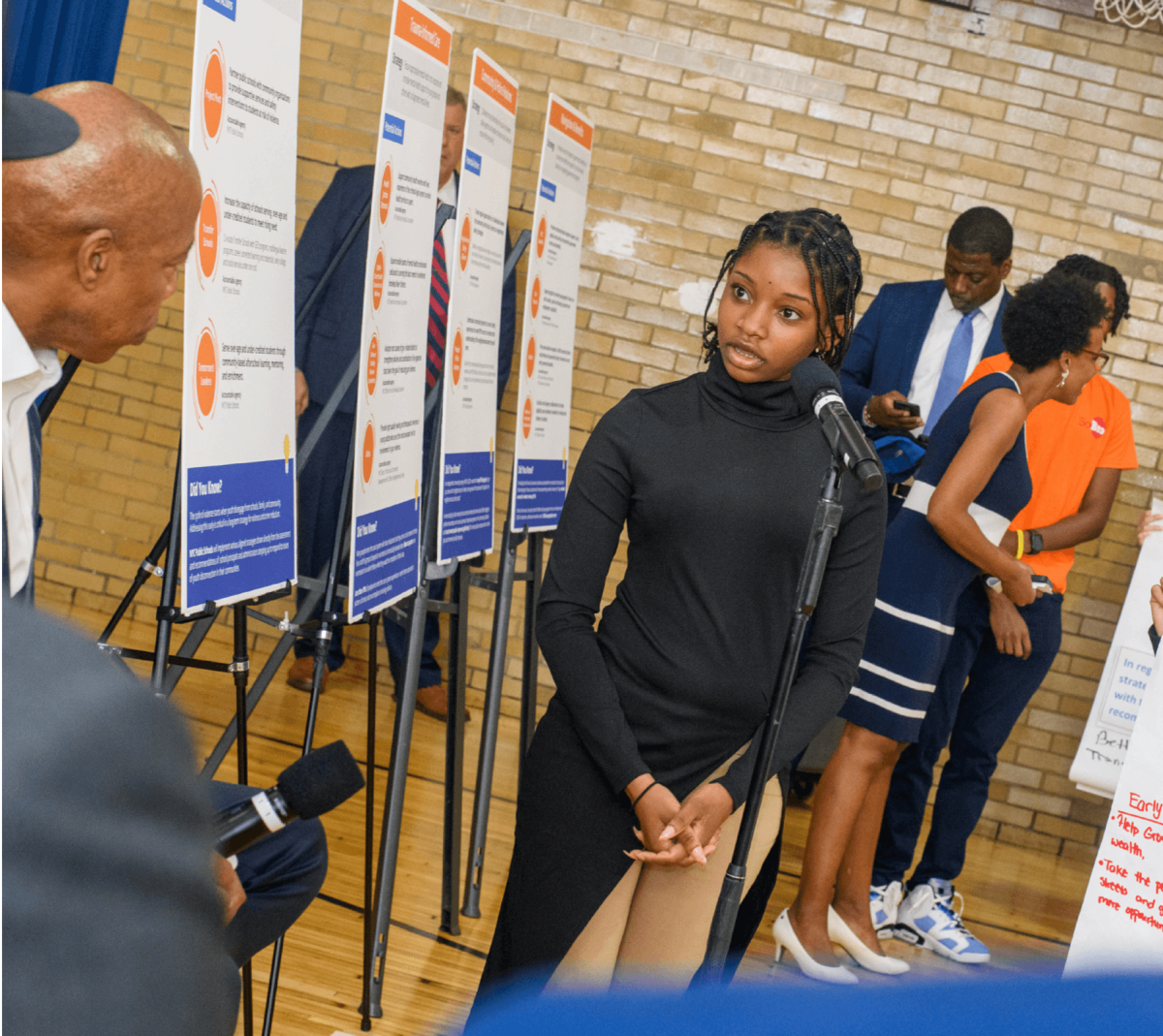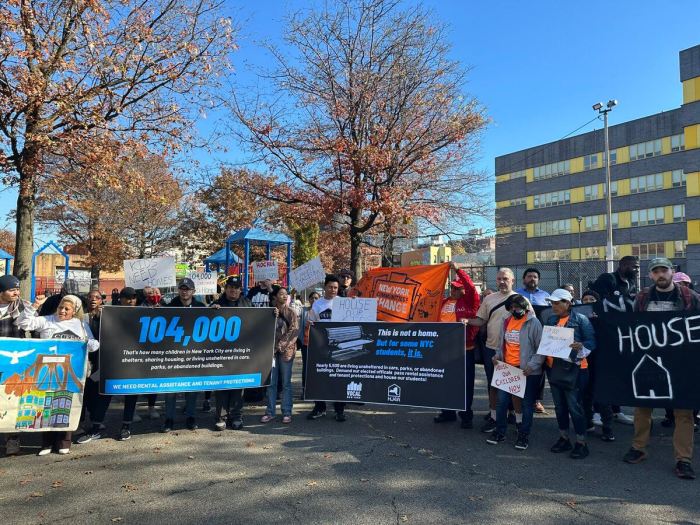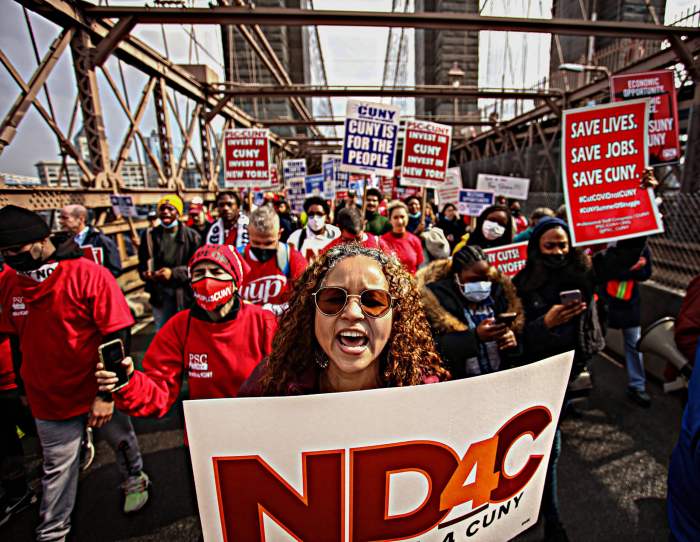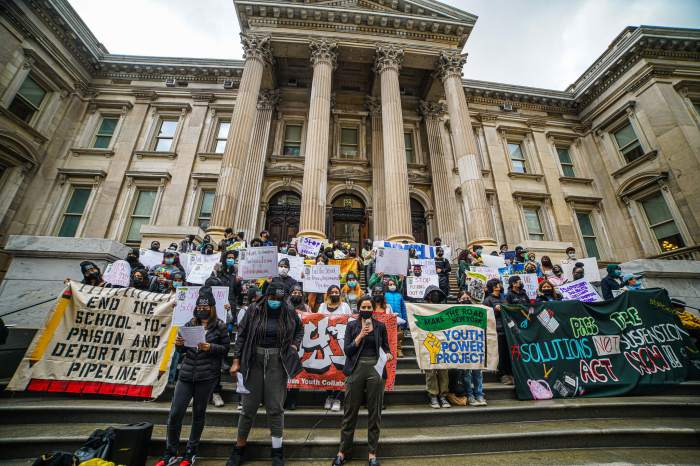New York City Mayor Eric Adams is taking further strides toward preventing youth gun violence and has released a gun violence prevention blueprint. New York City’s youth are at the forefront of the city’s “Blueprint for Community Safety” report unveiled by city and state administrators on Monday, July 31.
Many of the solutions outlined in the report, put together by multiple agencies as part of the city’s Gun Violence Prevention Task Force, address youth safety and mental health, and call for the implementation of early intervention strategies, year-round employment and entrepreneurship opportunities, and trauma-informed care.
The city is investing $485 million towards public safety efforts, with $343.46 million going toward youth-centered initiatives. This includes $118.3 million to increase early intervention support and mentorship for youth, $118.5 million for job and skills training for young New Yorkers, and $106.7 million in mental health resources for young people.
‘Largest new funding’ going towards year-round youth employment
The mayor’s office told amNewYork Metro that Adams is allocating $22.5 million — the largest new funding in the overall blueprint — toward expanding the Work, Learn & Grow (WLG) program in fiscal year 2024.
This investment will add 5,000 new slots for year-round employment opportunities for young people in the WLG employment program, which is run by the city’s Department of Youth and Community Development (DYCD). The program has a goal of finding paid internships for unemployed youth — aged 16 to 24.
Keith Howard, the commissioner of the DYCD, stated the investment will offer a total of 7,000 young people — prioritizing NYCHA residents and students at high-needs schools — an opportunity to receive paid work experience and explore careers in tech, government, healthcare, and corporate business.
“Mayor Adams continues to show that youth and young adults are at the very top of his agenda,” Howard said. “WLG is just one of the exceptional youth employment programs that represents the continuum of investment in this administration’s youth agenda.”
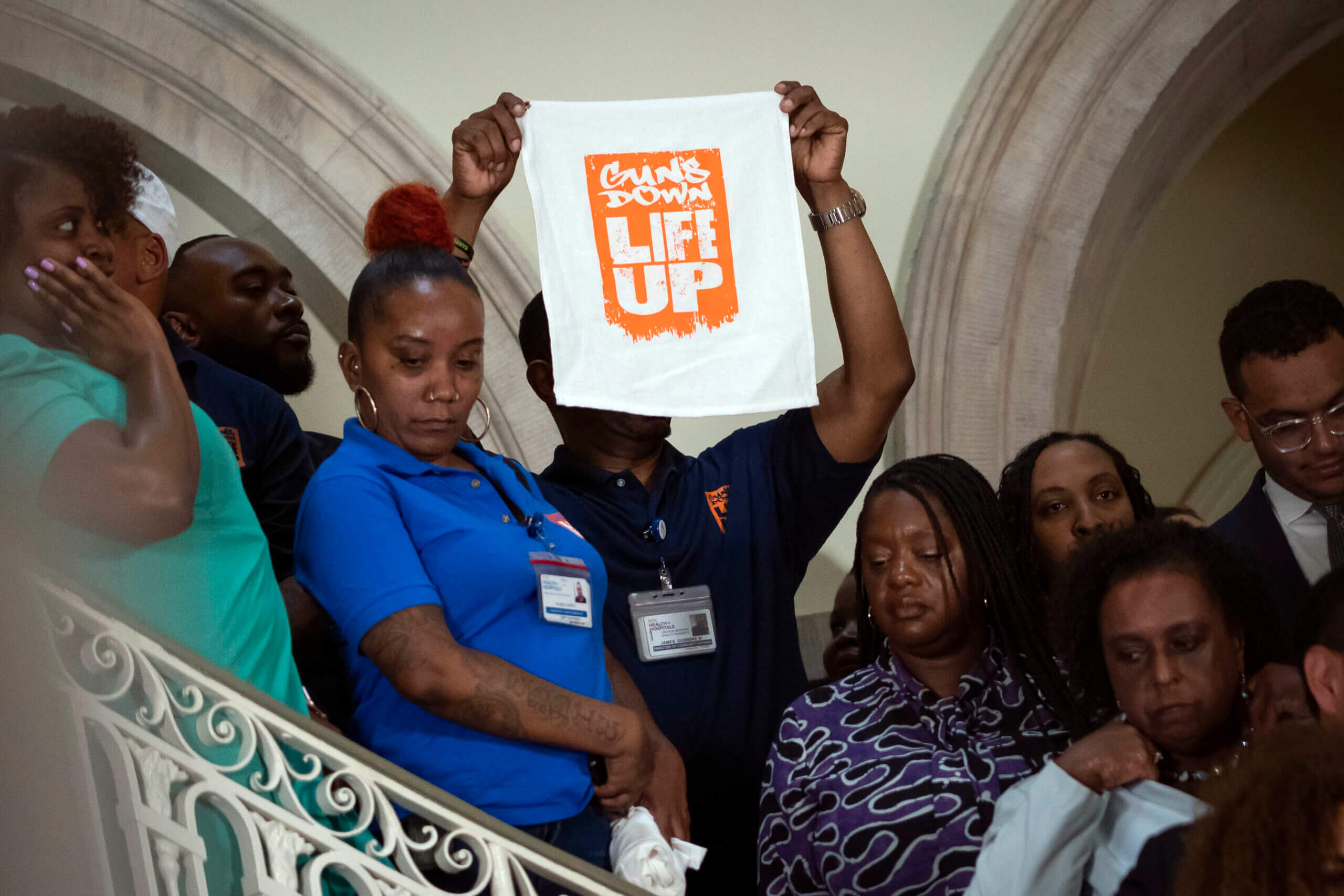
To support the prevention of youth gun violence, Manhattan District Attorney Alvin Bragg announced Monday that 10 community organizations—as part of the blueprint—will receive $20,000 each. The organizations are based in Harlem, Washington Heights, Inwood, the East Village, and the Lower East Side.
The community organizations will use the funds to pay young New Yorkers stipends to participate in three months of programming, including cognitive behavioral therapy, restorative justice, civic engagement, community enhancement projects, job trainings, and education.
Bragg said in a statement that the organizations were chosen based on their abilities to connect with and earn the trust of young people in their communities.
“Combatting gun violence in Manhattan is my top priority, and prevention efforts that engage young New Yorkers are a crucial component of public safety,” Bragg said. “By integrating young people into positive, stabilizing, and supportive social networks in their communities, we help keep them safe in the long term.”
‘Gun violence is increasingly impacting New York City’s youth’
The Gun Violence Prevention Task Force acknowledges in the report that “gun violence is increasingly impacting New York City’s youth” and that the number of young people under 18 being shot and hit by gunfire has doubled since 2019. Just last year, the NYPD reported 16 youth who were shot and killed across New York City.
This statistic reflects the largest increase across all age groups, the report states. Similarly, the number of youth gun violence offenders has also “nearly doubled over the same period, with shootings largely committed during after-school hours into the late evening.”
Six communities in the South Bronx, Northern Bronx, and Eastern Brooklyn have produced the highest gun violence rates in New York City. Homicide is the leading cause of death in these predominantly Black and Hispanic communities, the report states.
The communities of the greatest concern are: 40th Precinct (Port Morris, Mott Haven, Melrose); 42nd Precinct (Morrisania, Claremont, and Crotona Park); 44th Precinct (Grand Concourse, Bronx Terminal Market, Yankee Stadium); 47th Precinct (Wakefield, Woodlawn, Baychester, Williamsbridge); 73rd Precinct (Brownsville and Ocean Hill); and 75th Precinct (East New York and Cypress Hill).
These communities also suffer from higher rates of chronic absenteeism from schools, disconnected youth, admissions to juvenile detention, and low rates of high school graduation.
“We are hyper-focused on the integration of programs across the agency, starting with the six precincts most affected by gun violence,” said Howard, commissioner of the city’s Department of Youth and Community Development.
In particular, the task force highlighted alarming data points impacting each of the community’s youth population.
- Brownsville and Ocean Hill’s schools: 44.6% chronic absenteeism
- Cypress Hills and East New York: 7.2 out of 1,000 children are sent to juvenile detention
- Grand Concourse and Yankee Stadium: 2,051 children are in homeless shelters
- Mott Haven’s schools: 41.7% chronic absenteeism
- Morrisania: 9% youth disconnection
- Wakefield: 11.4 out of 1,000 children are placed in foster care
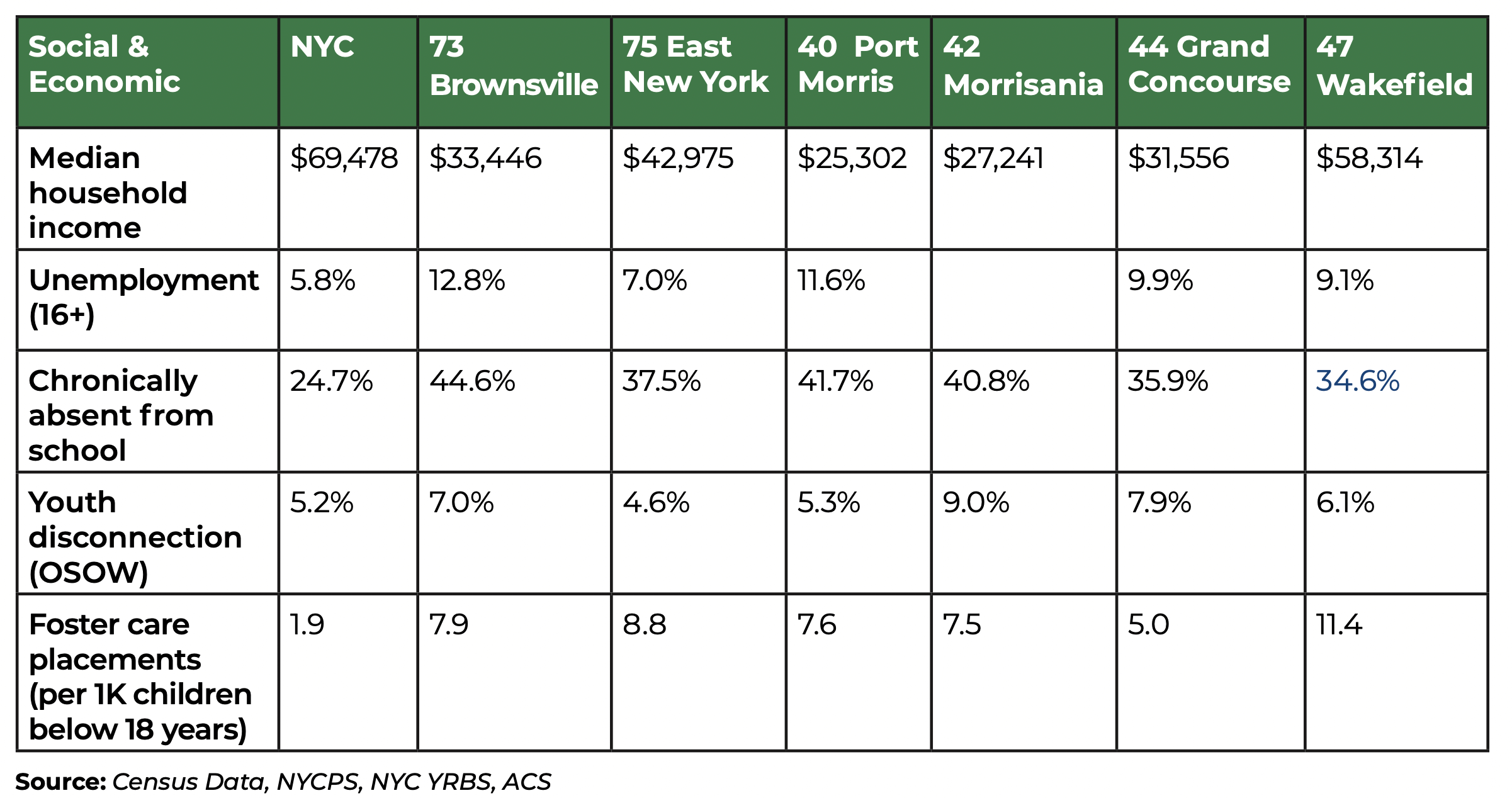
‘City needs interventions that start earlier’
Early intervention, employment and entrepreneurship, and trauma-informed care are the three strategies the city’s Gun Violence Prevention Task Force outlined. The city hosted 800 young people at town halls held in May and June this year. The city learned key themes from the youth that could help prevent further carnage from gun violence.
The key points that youth shared at the town halls:
- According to both students and principals in communities, youth need more counselors and service providers who affirm their diverse cultures and are equipped to engage with them.
- NYPD’s relationship with youth needs to improve significantly.
- Youth need intentional job training, readiness, and placement programs that are tailored to their interest.
- Youth voiced their distrust of the police and lack of safe spaces to safely report gun violence.
- Youth see opportunities to improve policing in their community.
- There is a high need for access to mental health supports and social-emotional learning programs in schools.
To start intervening as early as possible in elementary and middle schools, the city plans to “increase early educational, housing, health, recreational, and job supports and opportunities for youth with the most need.”
Youth at town halls had informed the city that public and private housing models should be expanded and more accessible, while also improving living conditions and security.
The city plans to build strong relationships to prevent youth from being recruited into gangs, the report states. There will be an increase in support of young parents, single mothers, parents working multiple jobs, and parents of larger families.
The relationship between the NYPD and youth is currently strained, according to the participants at the town halls. To address this tension, the youth recommend a police force that is more diverse, which represents the people in the communities that they serve and are more present at “positive community events.”
The youth also called for police training that produces cops that are “stronger, compassionate, and trauma-informed communicators.”
Currently, the youth unemployment rate in New York City is 17.9%, according to the report. To address this, the task force has recommended increasing youth access to quality jobs and economic security for youth.
Youth suggested creating more job training and readiness programs, including financial classes, in middle schools and after-school programs. There is also a need to create job opportunities for formerly incarcerated youth who are returning to society.
For improved mental health, youth informed the city of the need for comprehensive mental health services and interventions through digital platforms, in-person services, and schools. Youth recommended that mental health costs and waiting times be reduced, and that families without insurance can still access therapy and mental health support.
The report also detailed the expansion of Project Pivot, a violence prevention program that partners with New York City public schools to provide mentors and safety interventions to students at risk of violence. The program will expand from 144 to 200 schools in the 2024 fiscal year, increasing its reach to up to 10,000 students.
Schools Chancellor David Banks stated that the Gun Violence Prevention Blueprint is specific in its direction and guidance towards supporting New York City’s students. He pointed to several programs, including Project Pivot, NYC Reads, and Beacon youth programs, as a few examples of ways to support and engage with young people.
“It is unacceptable that gun violence has touched the lives of so many of our young people,” Banks said. “Every single child has a right to feel safe, supported, and affirmed in their communities.”



